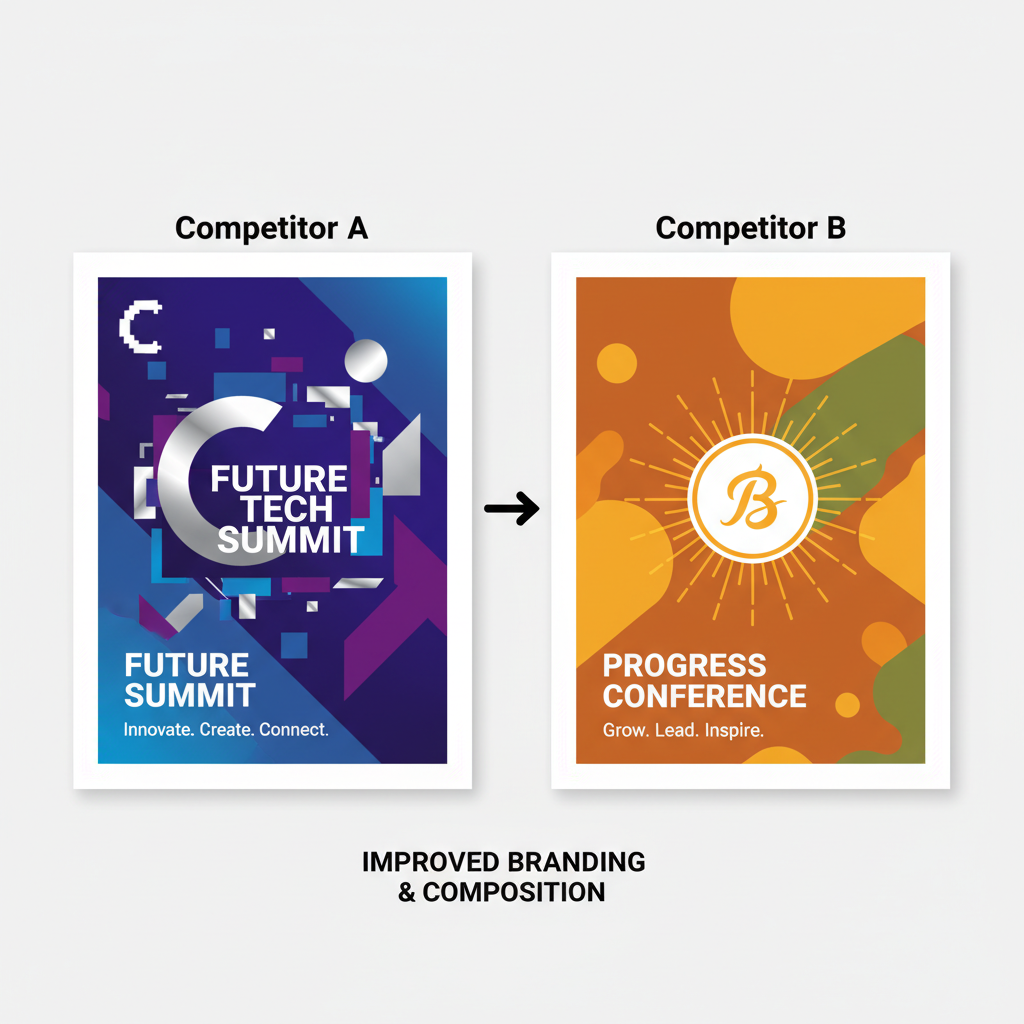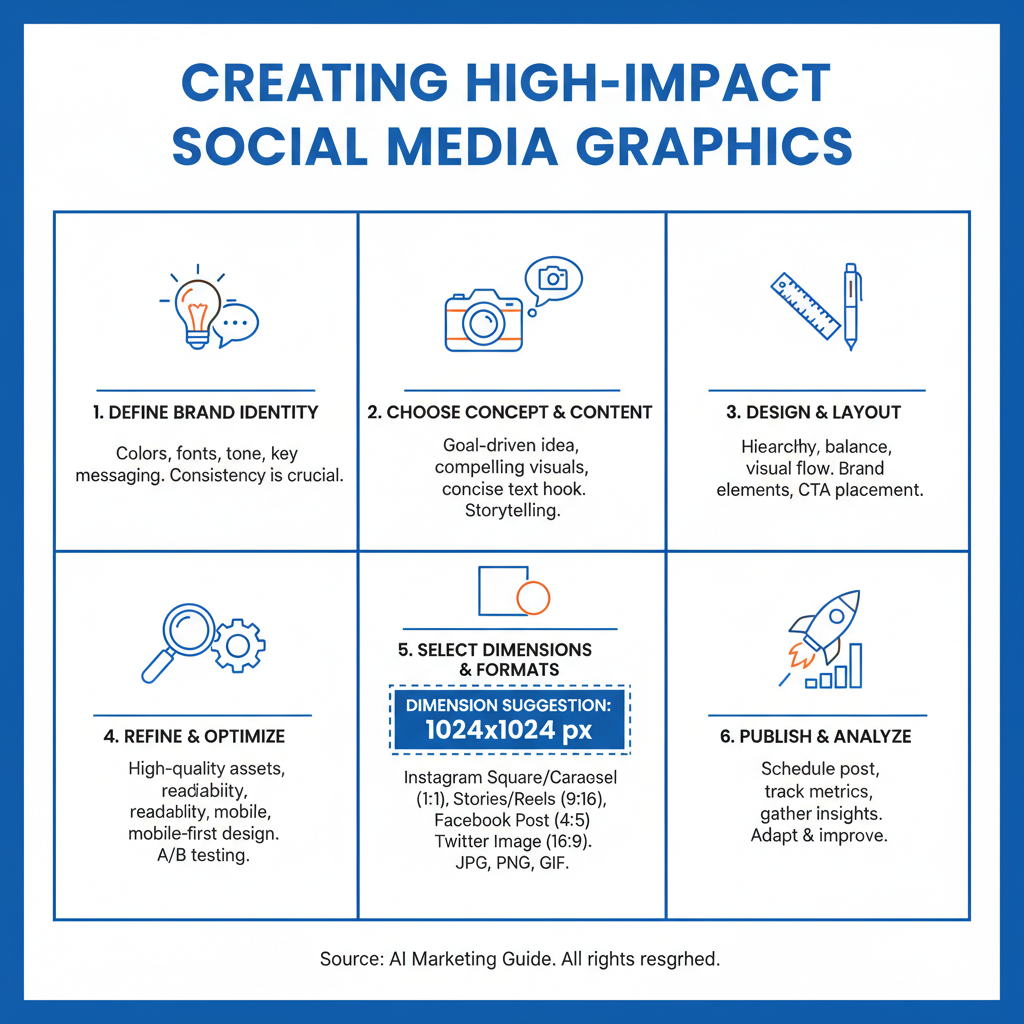Creating High-Impact Social Media Marketing Images
Learn how to craft high-impact social media marketing images with the right dimensions, branding, composition, and storytelling to boost engagement.

Creating High-Impact Social Media Marketing Images
In the fast-moving digital era, a social media marketing image is often the deciding factor in whether your message is noticed or ignored. Powerful visuals don't just look appealing—they convey brand personality, engage emotions, and drive results. This comprehensive guide explains how to design marketing images that excel on Facebook, Instagram, LinkedIn, and X (formerly Twitter), covering strategy, technical standards, and creative best practices to help your campaigns stand out.

---
Understand Brand Identity and Target Audience
Before opening any design software, clarify your brand’s visual communication style:
- Color Palette: Choose colors that reflect your brand personality—wellness brands may use calming greens and blues, while tech startups may opt for bold neons or deep blues.
- Tone: Playful, sophisticated, or aspirational—your tone should guide all imagery.
- Style: Decide between minimal designs, vibrant illustrations, or documentary-style photography.
Equally important is understanding your target audience. Demographic factors such as age, gender, and location shape what visuals resonate, while psychographics—values, interests, and lifestyles—help you fine-tune emotional appeal.
---
Research Competitors’ Visual Strategies
Studying competitor content exposes trends and gaps:

Look for:
- Frequency: Posting cadence can influence audience habit and engagement.
- Image Types: Identify if competitors rely on product photos, infographics, or brand illustrations.
- Engagement Patterns: Note which visuals earn higher interaction.
Use these insights to differentiate your own approach without directly imitating others.
---
Choose the Right Image Dimensions and Formats
Incorrect sizing can harm visual quality. Use platform-specific dimensions:
| Platform | Recommended Dimensions | Format |
|---|---|---|
| 1200 x 630 px | JPEG/PNG | |
| Instagram (Square) | 1080 x 1080 px | JPEG/PNG |
| Instagram (Story) | 1080 x 1920 px | JPEG/PNG/MP4 |
| 1200 x 627 px | JPEG/PNG | |
| X (Twitter) | 1200 x 675 px | JPEG/PNG |
By regularly checking platforms’ guidelines, you ensure your images remain crisp, clear, and uncropped.
---
Apply Consistent Branding with High-Resolution Imagery
Use high-resolution photos or graphics to project professionalism. Integrate key brand elements:
- Logo Placement: Add discreetly to maintain elegance.
- Fonts: Limit to 1–2 approved typefaces for cohesion.
- Colors: Maintain your palette for instant brand recognition.
Consistency builds familiarity, making your content easily identifiable.
---
Leverage Visual Storytelling
A great social media marketing image communicates narrative and emotion instantly. Effective storytelling techniques include:
- Showing real-life product use.
- Depicting a transformation or “before and after.”
- Using metaphors that resonate emotionally.
Storytelling elevates visuals from decorative to persuasive.
---
Master Composition: Rule of Thirds & Beyond
Good composition ensures immediate viewer connection:
- Rule of Thirds: Divide the frame into nine sections and place focal points along the lines.
- Leading Lines: Guide the viewer’s eye toward key elements.
- Symmetry/Patterns: Create visual harmony.
- Negative Space: Highlight subjects by allowing breathing room.
---
Use Text Overlays Strategically
Text overlays should enhance—not overpower—your visuals:
- Keep copy brief: focus on calls-to-action or headlines.
- Use legible fonts, especially for mobile viewing.
- Ensure high contrast between text and background.
Excess text can dilute impact and hurt engagement.
---
Select the Right Design Tools
Effective creation requires reliable tools:
- Canva: Templates & user-friendly interface.
- Adobe Express: High-quality presets and customization.
- Figma: Ideal for collaborative design with precision.
Choose based on budget, complexity, and team experience.
---
Optimize Image Files for Speed
Fast-loading images improve engagement and SEO. Use compression without visible quality loss:
## Using ImageMagick to resize and compress
convert input.jpg -resize 1200x630 -quality 85 output.jpgTips:
- Compress via TinyPNG or ImageOptim.
- Use proper formats: .jpg for photos, .png for transparent graphics.
- Test load times across devices.
---
Align Visuals with Campaign Objectives
Every image should support a defined goal:
- Engagement: Bright, shareable, on-trend visuals.
- Conversions: Promotions, product benefits.
- Brand Awareness: Cohesive presence across platforms.
Always connect visuals to measurable KPIs.
---
Run A/B Tests for Continuous Improvement
Test variations to discover what resonates:
- Adjust color schemes.
- Vary image composition.
- Alter text positioning or amount.
Track results with native analytics or external tools to fine-tune creative direction.
---
Ensure Accessibility
Accessible images reach wider audiences:
- Add descriptive alt text.
- Maintain strong color contrast.
- Avoid overly busy visuals.
Accessibility reflects brand responsibility and can boost compliance.
---
Plan Ahead with a Social Media Content Calendar
A content calendar supports consistency:
- Include seasonal promotions.
- Schedule product launches.
- Plan recurring campaign visuals.

Consistent posting builds trust and anticipation.
---
Monitor Performance and Refine
Analytics guide strategic refinements:
| Metric | Meaning | Actionable Insight |
|---|---|---|
| CTR (Click-Through Rate) | % of viewers clicking a link or CTA | Enhance clarity and placement of CTA |
| Engagement Rate | Interactions per impression | Experiment with new visuals or formats |
| Reach | Unique viewers | Optimize posting times or frequency |
Refine visual style, message, or platform focus based on these insights.
---
Conclusion
Creating compelling social media marketing images requires an intentional blend of branding, technical precision, creative storytelling, and performance analysis. By defining a strong visual identity, tailoring content to platform requirements, maintaining consistency, and continuously testing and optimizing, you’ll produce visuals that not only attract attention but inspire action.
Start applying these strategies now to elevate your brand’s presence and turn casual scrollers into loyal followers and customers.



